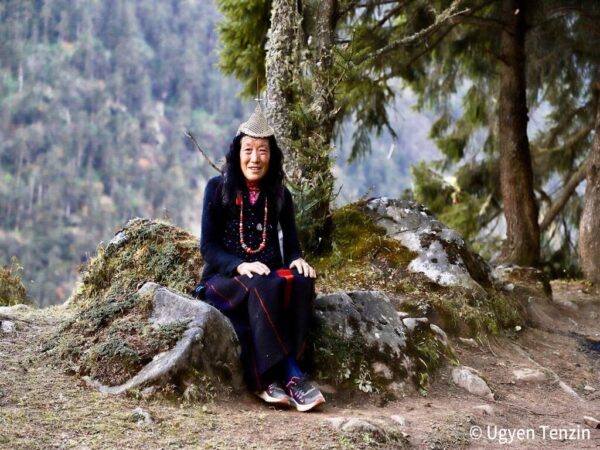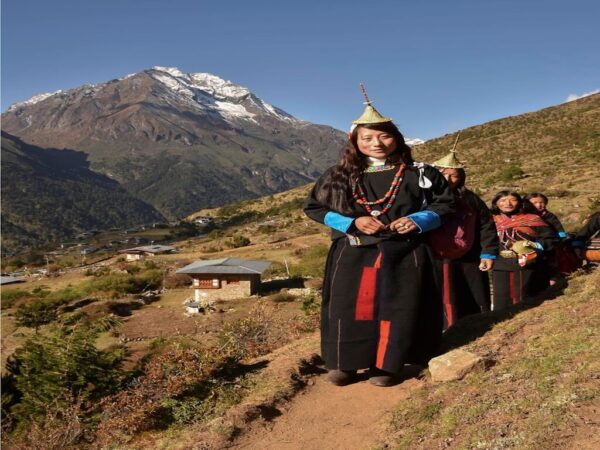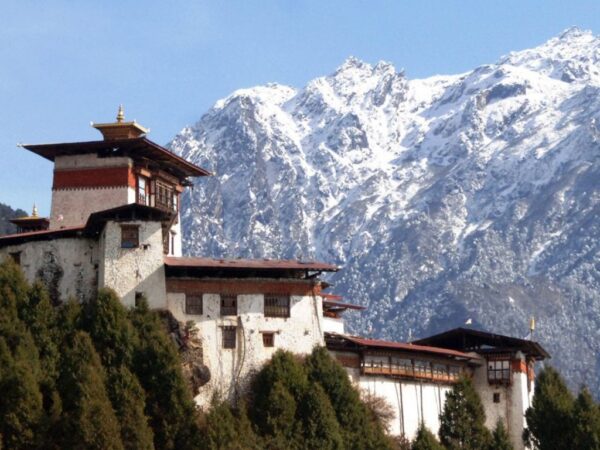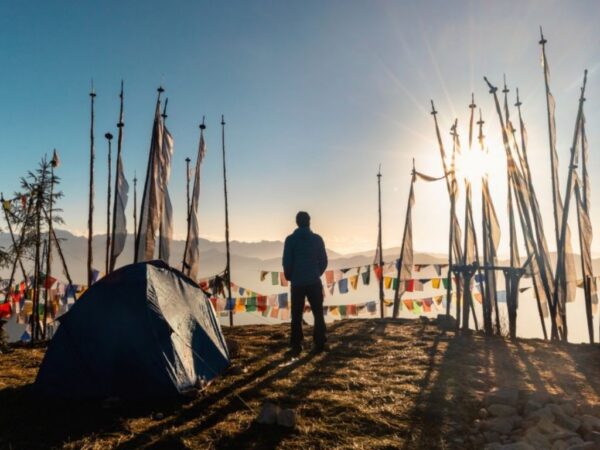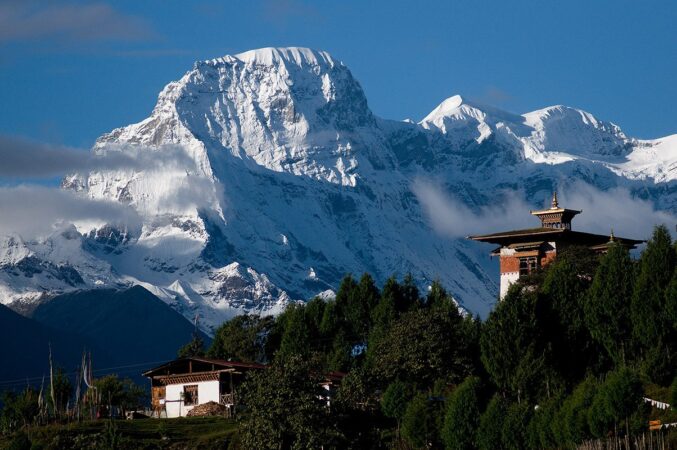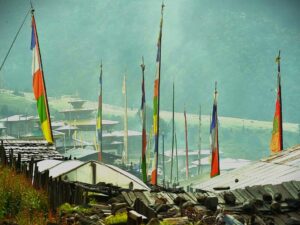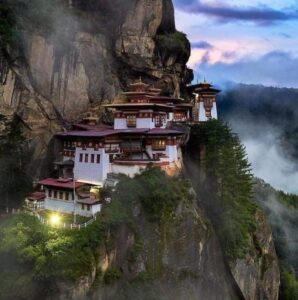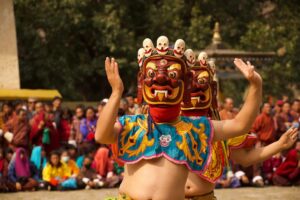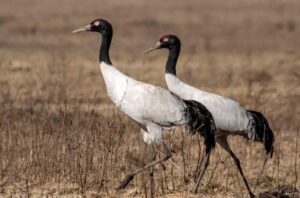Overview
The Laya Gasa Trek is a 18-days adventure through Bhutan’s stunning and diverse landscapes, starting from Gunitsawa Village and ending in Gasa. Trekkers will pass through lush forests, high mountain passes, and remote villages, experiencing the natural beauty and rich culture of Bhutan. Along the way, they will visit Sharna Zampa, Thangthangkha, and Jangothang, where breathtaking views of Mount Jomolhari await. The trek also takes them through Lingshi, Chebisa, and Laya, where they can experience Bhutanese traditions and warm hospitality. The journey concludes in Gasa, known for its soothing hot springs and historic dzong, offering a well-earned rest after an exciting and challenging trek.
Included/Excluded
- The Bhutan SDF
- All accommodations
- Meals and mineral water
- A licensed English-speaking guide
- A driver and vehicle
- Air fare
- A visa fee of US$40
- Alcohol
- Gifts/Souvenirs
- Travel insurance and personal bills
- Museums & Monument Fees
Tour Plan
Day 1: Arrival in Paro
Your flight to Paro offers breathtaking views of the Himalayas, with towering peaks giving way to the lush Paro Valley. On arrival, a HimaQuest Tours representative will greet you and transfer you to your hotel. After lunch, visit Ta Dzong, a historic watchtower now housing the National Museum, and explore Paro Rimpung Dzong, the valley’s administrative and religious center. A short walk leads to a traditional cantilevered bridge, showcasing Bhutanese architecture. In the evening, enjoy free time to explore the town, shop, or take photos before resting at your hotel.
Day 2: Paro – Hike to Taktsang Monastery ‘Tiger’s Nest’ (3120m)
After breakfast, drive to the base camp of Taktsang and begin your hike to the famous Tiger’s Nest Monastery. The uphill trek takes about two hours, offering breathtaking views of the monastery perched 900 meters above the valley. A sacred Buddhist site, it is believed that Guru Rimpoche flew here on a tigress and meditated in a cave, which later became the monastery. In the afternoon, visit the reconstructed Drukgyel Dzong, with Mount Jomolhari (7,314m) providing a stunning backdrop in clear weather. On the way back, explore other sights in Paro Valley. Overnight at your hotel in Paro.
Day 3: Shana to Thangthangka (Start of Trek)
The trek covers 22 km over 7–8 hours, ascending 770 meters to an altitude of 3,610 m. The trail winds through dense forests, past scattered farmhouses, and along the river’s edge. It narrows at points, with occasional ascents and descents. A junction along the way marks the route to Tibet via Tremo La Pass. The campsite awaits in a serene meadow with a stone shelter.
Day 4: Thangthangka to Jangothang
Altitude: 4,080 m | Distance: 19 km | Time: 5–6 hours | Ascent: 480 m
In the morning, the trail passes a small army post before gradually leaving the forest and climbing into a beautiful valley. Along the way, we pass Tegethang, a winter settlement for yak herders, where we stop for lunch in one of their huts. The route offers plenty of chances to spot yaks before arriving at Jhomolhari Base Camp (4,115 m). Surrounded by towering mountains, the camp is near the ruins of an ancient fortress once used to protect Bhutan from Tibetan invasions. Dinner and overnight stay at the campsite.
Day 5: Jangothang
Take a rest day at Jangothang and soak in the stunning mountain scenery. You can go on short hikes to alpine lakes or admire Jomolhari and Jichu Drake. The valley slopes are home to blue sheep, making wildlife sightings possible. Trek to Tosoh or explore various trails in the area. Mountains rise in all directions, Jomolhari to the west, Jichu Drake to the north, and unexplored peaks to the east, offering a perfect setting for acclimatization.
Day 6: Jangothang to Lingshi
Altitude: 4,000 m | Distance: 17 km | Time: 6–7 hours
Today's trek presents spectacular views of Jhomolhari, Jichu Drake, and Tserim Gang. We begin with a steep climb, reaching Nyelela Pass at 4,700 m after about 3 to 4 hours of ascent. From the pass, we descend towards Lingshi, passing by a circular hut where we will set up camp for the night. As we approach the village, we catch our first view of the mystical Dzong, perched majestically on a high hill. Dinner and overnight stay at the campsite.
Day 6: Jangothang to Lingshi
Altitude: 4,000 m | Distance: 17 km | Time: 6–7 hours
Today's trek offers stunning views of Jhomolhari, Jichu Drake, and Tserim Gang. We begin with a steep ascent, heading toward Nyelela Pass at 4,700 m, which takes about 3 to 4 hours to reach. After crossing the pass, we descend to a circular hut just below Lingshi, where we will set up camp. As we approach Lingshi, we get our first sight of the enchanting Dzong, perched high on a hill. Dinner and overnight stay at camp.
Day 07: Lingshi to Chebisa
Campsite Altitude: 3,880 m | Distance: 10 km | Time: 5–6 hours | Ascent: 280 m | Descent: 410 m
Today's trek offers a truly enchanting experience. Departing from Lingshi, we gradually ascend toward the scenic village of Gom Yu, located beneath a dramatic 300-meter cliff. Continuing on for another hour, we reach a tranquil valley that is home to the delightful village of Chebisa, where a stunning waterfall cascades at one end. We will camp by the river, soaking in the serene atmosphere. The walk is relatively easy, making for a relaxing day. Dinner and overnight stay at the campsite.
Day 08: Chebisa to Shomuthang
Camp Altitude: 4,220 m | Distance: 17 km | Time: 6–7 hours | Ascent: 890 m | Descent: 540 m
Our day starts with a challenging climb through high pastures as we make our way to the Gokula Pass at 4,320 m. From the pass, we descend through forests of dwarf rhododendrons. The trail then gently ascends before leading us down toward the campsite, which is situated beside a riverbed.
..
Day 9: Shomuthang to Robluthang
Camp Altitude: 4,160 m | Distance: 18 km | Time: 6–7 hours | Ascent: 700 m | Descent: 760 m
Today's trek takes us over the Jarela Pass at 4,640 m, offering spectacular views of the Himalayan peaks. After crossing the pass, we descend sharply through a forest trail into the Tsarigathang Valley, where we may encounter herds of Takin. Following this, we cross a river that reaches knee-depth before ascending to Robluthang, where we will camp for the night.
Day 10: Robluthang to Lemithang
Camp Altitude: 4,140 meters | Distance: 19 km | Time: 6-7 hours | Ascent: 850 meters | Descent: 870 meters
Today is one of the toughest sections of the trek as we steadily ascend to Shinchela Pass at 4,870 meters, where we’re rewarded with breathtaking views of the surrounding mountains, including Gang Chen Ta. On clear days, the peaks along the northern border become visible. This area is home to wildlife such as eagles, griffon vultures, blue sheep, and yaks. After taking in the panoramic views, we descend to our camp, nestled in a serene location by the river.
Day 11: Lemithang to Laya
Camp Altitude: 3,840 m | Distance: 10 km | Time: 4–5 hours | Ascent: 60 m | Descent: 340 m
Today's trek follows a tributary of the Mochu River, winding through forests of rhododendrons and silver firs before arriving at the village of Laya. The villagers are known for their distinctive yak hair garments with vertical stripes and conical bamboo hats. Laya women often adorn their long hair with turquoise and jade jewelry. Their appearance carries a more Tibetan/Mongolian influence compared to the central Bhutanese. The afternoon is free to wander the village, visit local homes, and take in breathtaking views of Masagang and surrounding peaks.
Day 12: Laya (Halt)
We have a rest day at Laya, giving us the perfect opportunity to meet the friendly locals and immerse ourselves in the unique culture of the village. You can explore the traditional homes, learn about their way of life, and observe the village's distinctive architecture. It’s also a great time to interact with the villagers, who are known for their hospitality and unique customs. The peaceful surroundings and stunning views of the mountains provide a serene backdrop for a day of relaxation and discovery.
Day 13: Laya to Koena
Camp Altitude: 3,050 m | Distance: 19 km | Time: 6–7 hours | Ascent: 260 m | Descent: 1,070 m
The trail meanders through the Mo Chhu river valley, with several ascents and descents that pass by rushing rivers, streams, and waterfalls, offering stunning views along the way. After navigating the natural obstacles, the path leads up to Kohi Lapcha at 3,300 m. From there, it gradually descends to the Koina Chhu stream, where we will set up camp for the night.
.
Day 14: Koena to Gasa Tsachu (End of Trek)
At an altitude of 2,638 meters, we will camp after covering 14 km in 6-7 hours, with an ascent of 900 meters and a descent of 1,710 meters. Our journey takes us uphill to Balela Pass, at 3,740 meters, followed by a descent to Gasa Village. One of the most memorable moments is the sight of Gasa Dzong, perched beautifully above the village. Afterward, we take a steep downhill path to the river, where we’ll camp near the hot spring for a relaxing bath.
Day 15: Gasa Tsachu to Punakha (47 km)
After breakfast, drive to Punakha, stopping along the way for a 45-minute hike to the Khamsung Yulley Namgyal Choling Monastery. Continue to Yabesa Village, where you’ll hike through rice fields to the Khamsum Yueley Namgyal Chorten, built by Her Majesty Queen Ashi Tshering Yangdon Wangchuk. The Chorten, perched on a hill above the river, houses beautiful paintings from the Nyingmapa tradition. After lunch, explore Punakha Dzong, constructed in 1637 by Shabdrung Ngawang Namgyal, located between the Pho Chu (Male River) and Mo Chu (Female River). Once the government seat until the reign of the second king, the Dzong’s construction was foretold by Guru Rinpoche, who described a hill resembling an elephant where a person named Namgyal would arrive. A smaller structure, Dzong Chu (Small Dzong), once housed a statue of Buddha, and the Dzong preserves war relics from the Tibetan conflict. Punakha also remains the winter residence of the Je-Khenpo, and it was here that King Jigme Dorji Wangchuk convened the National Assembly in 1952. End your day with dinner and an overnight stay at a hotel in Punakha.
Day 16: Punakha to Thimphu (72 Km)
After breakfast, visit Chimi Lhakhang, the 'Temple of Fertility' built by Lama Drukpa Kuenley in 1499, before continuing to Thimphu. In the evening, explore Trashichhoedzong, a fortress built in 1641 by Shabdrung Ngawang Namgyal and the center of Bhutan's government and religion. End the day with a stroll around Thimphu and some shopping. Overnight at a hotel in Thimphu.
Day 17: Thimphu to Paro (55km)
After breakfast, explore Thimphu Valley, visiting the National Library, which houses a vast collection of Buddhist manuscripts, and the Institute for Zorig Chusum, where students are trained in Bhutan’s 13 traditional arts and crafts. After lunch, visit the King’s Memorial Chorten, a monument to peace and prosperity, and then head to Buddha Point for stunning panoramic views of the Thimphu Valley. Afterward, drive to Paro, stopping at Simtokha Dzong, the oldest fortress in Bhutan, built in 1627, which now houses a school for Buddhist studies. Once in Paro, take a leisurely stroll around the town, visit local shops, and enjoy the picturesque surroundings. Overnight stay at a hotel in Paro.
Day 18: Depart Paro
After enjoying breakfast at the hotel, drive to the airport for your flight to your next destination. Wishing you a safe and pleasant journey ahead. Tashi Delek!
Tour Map
Frequently asked question
Itinerary is always flexible if you are travelling in a smaller group. You have a choice of eating in a different restaurant, however, the menu depends on the chef and usually it is a set menu but not necessarily the same menu every day.
It is in the tourism industry but it is not compulsory. It actually depends on the service rendered to you.
Yes, things that are not included in the tariff are all beverages, telecommunications, tips, laundry, massage and souvenir shopping.
Bhutan is well connected and every town has IDD services. Internet cafes are available almost everywhere. Cell phones can also be used but you need to get Bhutan prepaid SIM Card and recharge it. Recharge vouchers are available at every second shop in town.
You can exchange money in the banks as well as in the hotels were you are staying. Rates will be better in the banks plus US$ is acceptable in almost all of the shops in town.
It cannot be safer anywhere else in the world.
Bhutan is all season tourist destination for cultural tours. However the month of February, March, April, and September, October, November are considered the best time due to pleasant weather conditions. December and January are winter months and June, July and August, the rainy season. It is important to note that the climatic conditions during the winter months are not extreme. The average temperature would range from 10-17 degree Celsius during day time.
The money you have transferred will be with held by the Tourism Council of Bhutan till the day you depart. Travel Agents can only withdraw the money after your departure upon submitting your tour invoice. Therefore, your money is safe.
It is government rule that total tour payment must be remitted without which the government will not issue the visa.
Decide the number of days you want to spend in Bhutan according to your interest and budget.
Decide the date and the port of entry (You can fly into Bhutan from one of these cities; Bangkok, Katmandu, New Delhi, Calcutta and Dacca) into Bhutan.
Fill up the visa application form (You can download the visa application form here).
Remit the total tour payment (You can download the money transfer details here). It is government rule that total tour payment must be remitted without which the government will not issue the visa.
Once we have confirmed dates, port of entry, dully filled visa application form, and money received, we will process your visa.
Except for travelers from India, Bangladesh and Maldives, all visitors to Bhutan are required to obtain visa approval prior to their arrival, which will be processed by us.
Tourism is not restricted but the minimum daily tariff is set by the government. It is also necessary that all tourists must come through a registered tour operator to plan your itinerary and process your visa. Tourist cannot come on their own unless they are invited guest.
Druk Air operates daily flight (once daily) from Bangkok (Thailand) and four flights a week from New Delhi, Kathmandu and Calcutta (India) and two flights a week from Dacca (Bangladesh). There are different flight schedules for the summer and the winter seasons. For Druk Air schedules click on Flights Details or you can also visit Druk Air web site at www.drukair.com.bt . You can also enter Bhutan via Bagdogra Airport, Siliguri (West Bengal) in India. It has regular flights from New Delhi (twice daily).
Bhutan is connected to the outside world through Druk Air (Royal Bhutan Airlines), the national carrier which is the only airline operating flights in and out of the kingdom.

